Feb. 28, 2025
Prelims Pointers
Feb. 28, 2025
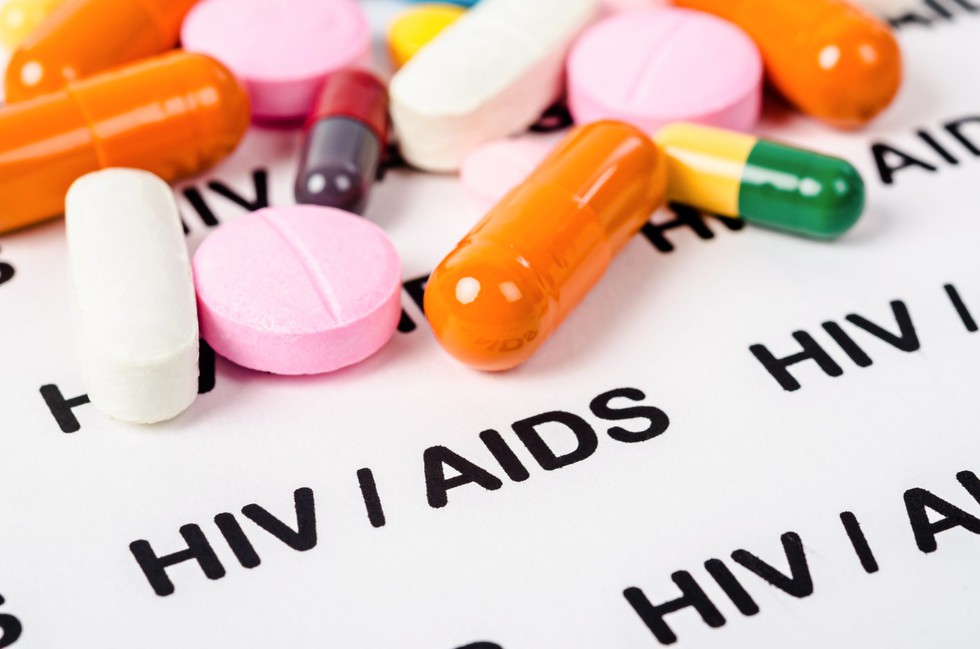
About Anti-Retroviral Therapy (ART):
- ART is a combination of medications that treat human immunodeficiency virus (HIV).
- HIV is a virus that destroys CD4 cells (also called helper T-cells), an important part of the immune system.
- While ART cannot cure HIV, prompt HIV treatment can help all people with HIV live long, healthy lives and reduce the risk of HIV transmission.
- Although there may still be HIV in the body, the additional CD4 cells keep the immune system strong enough to fight off infections.
- By reducing the amount of HIV in the body, HIV medicines also reduce the risk of HIV transmission.
- One of the main goals of HIV treatment is to reduce a person’s viral load to an undetectable level.
- People with HIV who maintain an undetectable viral load have effectively no risk of transmitting HIV through physical relationship, and a significantly lower risk of transmission through other means (such as shared needles).
- It is a combination of medications. Taking a combination of medications, rather than just one, makes the treatment more effective.
- HIV treatment is called “antiretroviral” because HIV is a retrovirus.
- This means it uses its genetic material (RNA) as a template to make DNA.
- Types of ART medications include:
-
- Entry inhibitors. These include attachment inhibitors, fusion inhibitors, CCR5 antagonists and post-attachment inhibitors.
- Capsid inhibitors
- Nucleoside reverse transcriptase inhibitors (NRTIs)
- Non-nucleoside reverse transcriptase inhibitors (NNRTIs)
- Integrase inhibitors/integrase strand transfer inhibitors (INSTIs)
- Protease inhibitors
- Pharmacokinetic enhancers
- Combination medications
Prelims Pointers
Feb. 28, 2025
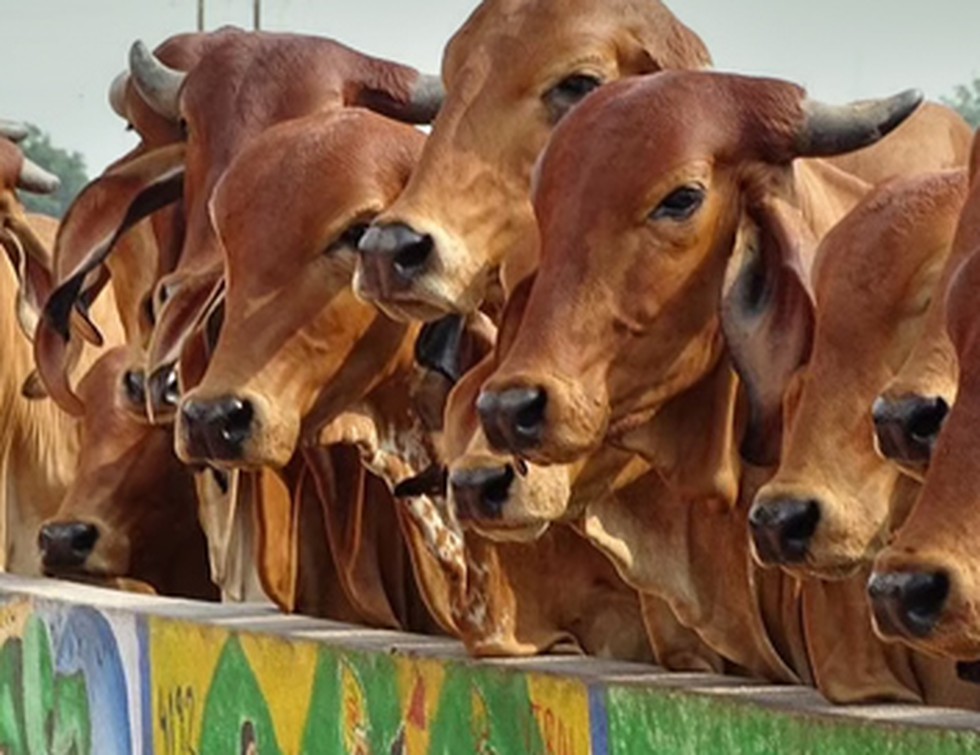
About Animal Welfare Board of India (AWBI):
- It is a statutory body set up in 1962 in accordance with Section 4 of the Prevention of Cruelty to Animals Act 1960.
- It was started under the stewardship of Late Smt. Rukmini Devi Arundale, a well-known humanitarian.
- The mandate of the Board is to promote animal welfare in general and to protect animals from being subjected to unnecessary pain or suffering, in particular.
- Headquarters: Ballabhgarh in Haryana
- It advises state and central governments on the issues related to animal welfare, including cruelty meted out to animals.
- The AWBI periodically addresses the letters to the State Governments and UTs regarding the complaints received and requests them to take necessary action against the offenders as per law.
- The State Authorities are empowered to initiate appropriate action against the offenders meting out cruelty to animals and to take action as per the law.
- AWBI also gives financial assistance and other assistance to Animal Welfare Organisations functioning in any local area, to impart education in relation to the humane treatment of animals and so on.
- Membership:
- The Board consists of 28 Members.
- The term of office of Members is for a period of 3 years.
- Several government organisations, along with animal rights activists and parliamentarians, are represented on the Board.
Prelims Pointers
Feb. 28, 2025
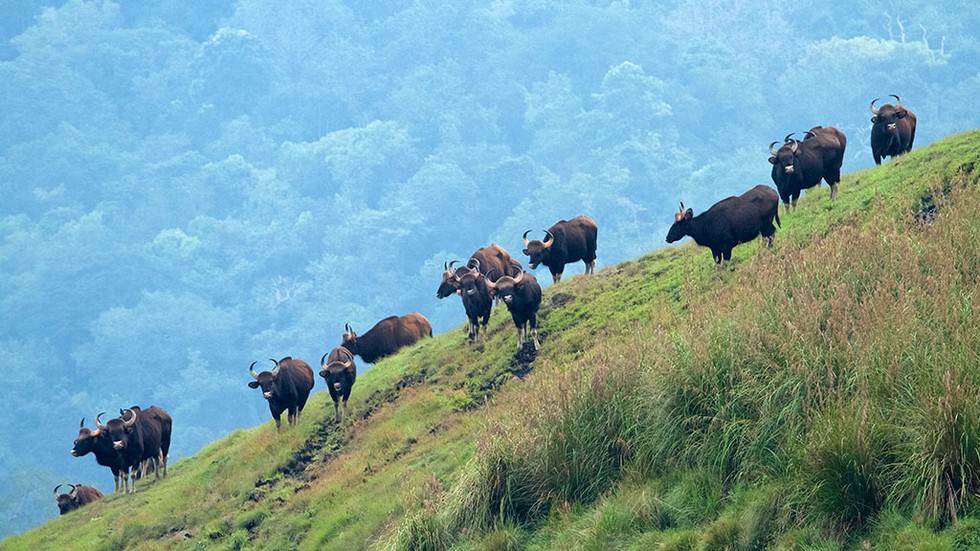
About Idukki Wildlife Sanctuary (IWL):
- IWL, which came into existence in 1976, is located in the Thodupuzha and Udumbanchola taluks in Idukki District, Kerala.
- It covers 77 sq.km. of forests surrounding the Idukki Arch Dam.
- The terrain of the sanctuary is characterized by steep mountains, valleys, and hills.
- Altitude: Altitude ranging from 450 to 1272 m. The highest peak is Vanjur Medu (1272 m).
- Drainage: The major rivers flowing through the area are Periyar and Cheruthoniar. The sanctuary consists of 33 sq.km. of waterbody of Idukki reservoir.
- Rainfall: Average rainfall is 3800 mm.
- Vegetation: West Coast Tropical Evergreen forests, Semi Evergreen forests, Moist Deciduous Forests, Hill shoals and Grasslands.
- Flora: Forests are essentially dense teak, rosewood, jackfruit, ebony, cinnamon, and diverse bamboo species.
- Fauna:
- It is home to Elephants, bison, sambar deer, wild dogs, tigers, wild boar etc apart from various species of snakes including cobra, viper, krait, etc.
- Birds include jungle fowl, myna, laughing thrush, black bulbul, peafowl, woodpecker, kingfisher, etc.
- It is home to the endangered species of the Nilgiri Tahr.
Prelims Pointers
Feb. 28, 2025

About Hague Service Convention:
- Hague Service Convention, formally known as the Convention on the Service Abroad of Judicial and Extrajudicial Documents in Civil or Commercial Matters, 1965, was adopted at the Hague Conference on Private International Law in 1965.
- Building on the 1905 and 1954 Hague Conventions on Civil Procedure, this multilateral treaty ensures that defendants sued in foreign jurisdictions receive timely and actual notice of legal proceedings while facilitating proof of service.
- 84 states, including India and the U.S., are parties to the Convention.
- Its procedures apply only when both the sending and receiving countries are signatories.
- Each member state must also designate a central authority to process requests and facilitate the service of documents from other signatory states.
- Signatory states can select the modes of transmission that apply within their jurisdiction.
- Under the Convention, the primary mode of service is through designated central authorities.
- However, alternative channels are also available, including postal service, diplomatic and consular channels, direct communication between judicial officers in both states, direct contact between an interested party and judicial authorities in the receiving state, and direct communication between government authorities.
- How is service effectuated on defendants in India?
- India acceded to the Convention on November 23, 2006, with certain reservations, expressly opposing all alternative service methods under Article 10.
- It prohibits the service of judicial documents through diplomatic or consular channels, except when the recipient is a national of the requesting country.
- Additionally, all service requests must be in English or accompanied by an English translation.
- As a result, valid service can only be executed through the Ministry of Law and Justice, India’s designated central authority.
- The Ministry is permitted to reject a service request, but must specify the reasons for such refusal.
- For instance, under Article 13, a request can be denied if the state believes its sovereignty or security would be compromised.
- However, a state cannot reject a service request solely because it claims exclusive jurisdiction over the subject matter under its domestic law.
- Similarly, under Article 29, a request cannot be refused simply because the state’s internal law does not recognise a right of action.
- If the central authority raises no objections, it proceeds with serving the defendant.
- The service is then treated as a summons issued by an Indian court under Section 29(c) of the Code of Civil Procedure, 1908.
- Once completed, the central authority issues an acknowledgement to the requesting party.
- The entire process typically takes six to eight months.
- Can a default verdict be rendered?
- A default judgment may be issued under the Convention if a foreign government refuses to cooperate in serving summons on a defendant residing within its jurisdiction.
- However, Article 15 prescribes specific conditions that must be met before such a judgment can be rendered:
- the document must have been transmitted through one of the methods outlined in the Convention;
- at least six months must have elapsed since the transmission, with the court determining this period to be reasonable in the given case; and
- no certificate of service has been received despite all efforts to obtain it through the competent authorities of the recipient state.
- Notably, India has expressly declared that its courts may issue a default judgment in cross-border disputes even if no certificate of service or delivery has been received, provided that all conditions under Article 15 are met.
Prelims Pointers
Feb. 28, 2025
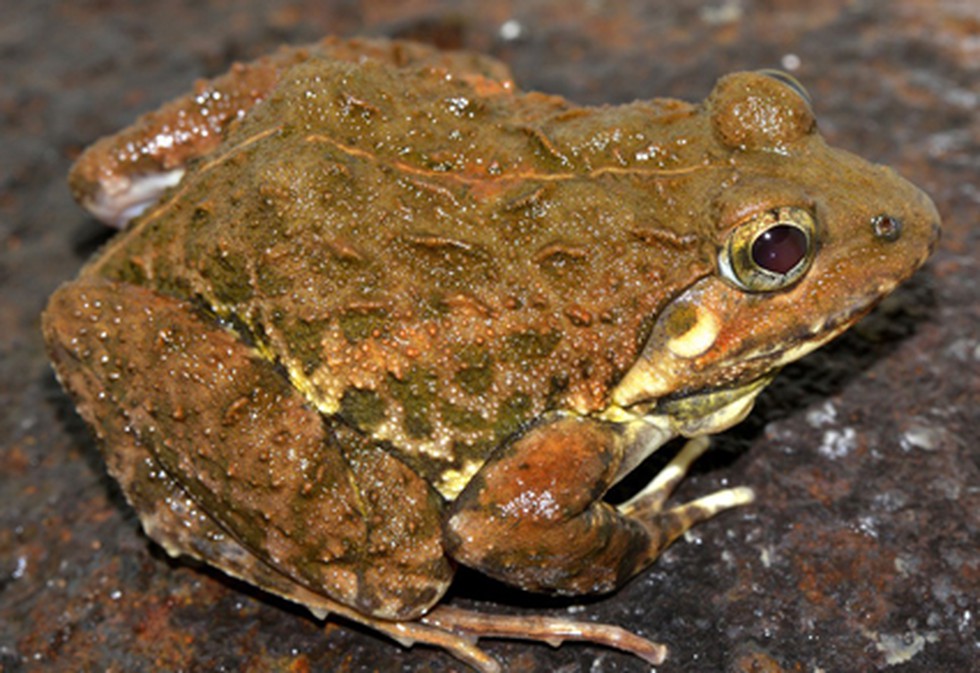
About Minervarya ghatiborealis:
- This new species of endemic frog was found at Mahabaleshwar in the north-western Ghats of Sahyadri in Maharashtra.
- This species is named after the Sanskrit word ‘Ghati', meaning western, and the Latin word ‘Borealis', meaning northern region, thus meaning ‘from the north western Ghats'.
- It has been included in the genus Minervarya, commonly known as the ‘Cricket frog'.
- Frogs of the Minervarya genus are distinguished by the parallel lines on their abdomens.
- They nest near standing water or small springs and make noises similar to that of nightingales.
- The breeding vocalisation of males differs from other species of the genus.
Prelims Pointers
Feb. 28, 2025

About WHO Framework Convention on Tobacco Control:
- It is the first international treaty negotiated under the auspices of the World Health Organization
- It was adopted by the World Health Assembly on 21 May 2003 and entered into force on 27 February 2005.
- There are currently 181 Parties to the Convention.
- It was developed by countries in response to the globalization of the tobacco epidemic.
- It aims to tackle some of the causes of that epidemic, including complex factors with cross -border effects, such as trade liberalization and direct foreign investment, tobacco advertising, promotion and sponsorship beyond national borders, and illicit trade in tobacco products.
- of India ratified the WHO Framework Convention on Tobacco Control (WHO FCTC) in 2004.
- It provides for various measures to reduce the demand as well as supply of tobacco.
- It provides a framework for tobacco control measures to be implemented at the national, regional and international levels. This includes actions to:
- Protect public health policies from commercial and other vested interests of the tobacco industry.
- Adopt price and tax measures to reduce the demand for tobacco.
- Protect people from exposure to tobacco smoke
- Regulate the contents of tobacco products
- Regulate tobacco product disclosures
- Regulate the packaging and labeling of tobacco products
Prelims Pointers
Feb. 28, 2025

About General Anti Avoidance Rules:
- It is an anti-tax avoidance law in India to curb tax evasion and avoid tax leaks.
- It came into effect on 1st April 2017. The GAAR provisions come under the Income Tax Act, 1961.
- It is specifically aimed at cutting revenue losses that happen to the government due to aggressive tax avoidance measures practiced by companies.
- It is meant to apply to transactions that are prima facie legal, but result in tax reduction.
- Under current rules, reassessment notices where the under-reported income is Rs ₹50 lakh or more, have to be issued within 5 years and 3 months from the end of the assessment year.
- GAAR provisions give wide powers to tax authorities to treat any arrangement or a transaction as an ‘impermissible avoidance arrangement’ (IAA) and re-compute income and consequent tax implications.
Prelims Pointers
Feb. 28, 2025
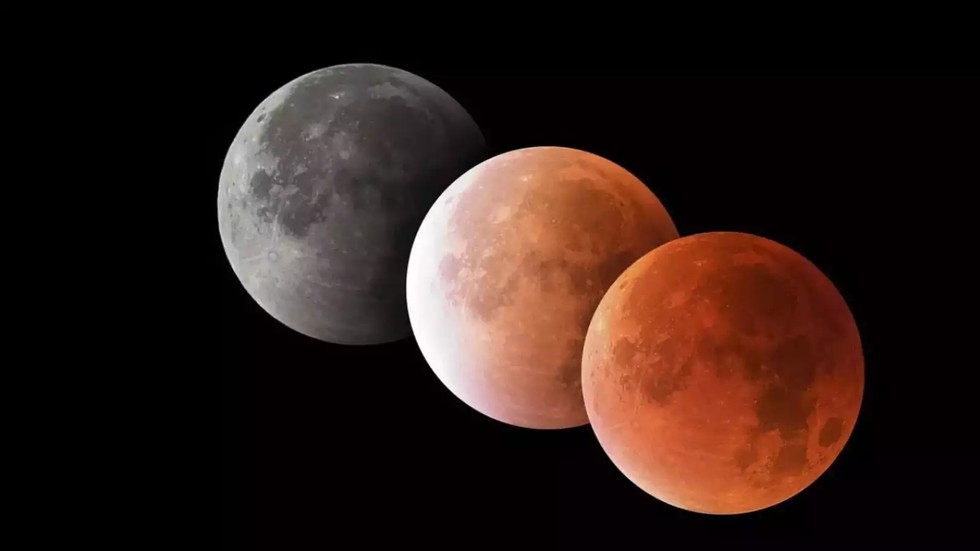
About Blood Moon:
- It happens when Earth's moon is in a total lunar eclipse.
- How it occurs?
- A blood moon occur when Earth comes directly between the Sun and the moon.
- A process called Rayleigh scattering causes the moon to appear red instead of dark.
- This happens because shorter-wavelength light (blue) is scattered, while longer-wavelength red light passes through the Earth’s atmosphere, making the moon appear red.
- During totality, “the entire Moon falls within the darkest part of Earth’s shadow, called the umbra.
- When the Moon is within the umbra, it appears red-orange.” This colour shift is what earns the event its nickname, the “blood moon.”
- Depending on external factors such as atmospheric conditions and light pollution, the moon, during a blood moon phase, may appear red, orange, or copper-coloured.
- This year’s phenomenon will occur during daytime in India, thus won’t be visible in the country but will be visible in America, Western Europe, Western Africa, and the North and South Atlantic Ocean.
- This total lunar eclipse marks its return after nearly three years––the last one occurring in 2022.
Prelims Pointers
Feb. 28, 2025

About Lunar Trailblazer Spacecraft:
- It is an initiative of the National Aeronautics and Space Administration (NASA).
- Objective: It is being sent to find and map water on the moon’s surface.
- It is about the size of a dishwasher and relies on a relatively small propulsion system.
- It weighs about 200 kg and measures about 3.5 metres wide when its solar panels are fully deployed.
- It is scheduled to perform a series of moon flybys and looping orbits over a span of several months to position itself to map the surface in detail.
- It eventually will orbit at an altitude of roughly 100 km and collect high-resolution images of targeted areas to determine the form, distribution and abundance of water and to better understand the lunar water cycle.
- It is carrying two instruments to achieve its science objectives:
- High-resolution Volatiles and Minerals Moon Mapper (HVM3): It will look at the moon’s surface for a telltale pattern of light given off by water.
- Lunar Thermal Mapper (LTM): It will map and measure the lunar surface temperature.
- When used in conjunction, these two instruments provide the ability to simultaneously identify the various forms of water on the moon, mineralogy, and temperature.
- It was built by Lockheed Martin’s space division.
Prelims Pointers
Feb. 28, 2025

About Doomsday Fish:
- It is also known as Orafish and the “sea serpent” is a deep-sea dweller that rarely comes near the surface.
- Appearance:
- It is known for its long, ribbon-like body and bright orange fins.
- It can grow to more than 30 feet, which makes them quite the sight to behold.
- Diet: It is filter feeders and primarily eats krill, plankton and other small crustaceans.
- Habitat: They are deep-sea dwellers, thriving most often in the zone least explored by scientists to date: the mesopelagic zone (waters down to 1,000 meters).
Folklore related to Doomsday Fish:
- In some areas of the world, these creatures are seen as being harbingers of bad news, particularly disasters or destruction.
- The oarfish has the nickname of "Ryugu no tsukai," or "sea god's palace messenger," in Japanese folklore.
- This myth traces back to the 17th century and says that the surfacing of the oarfish is a harbinger of future natural disasters.
- The myth received strong support in 2011 when several oarfish washed up on beaches in Japan only some months before the destructive Tōhoku earthquake and tsunami.
Feb. 27, 2025
Prelims Pointers
Feb. 27, 2025
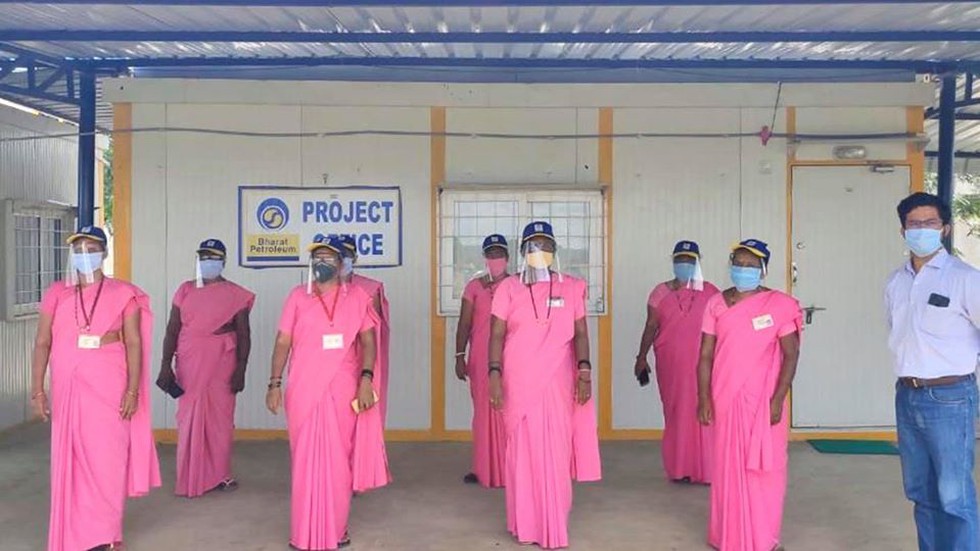
About Accredited Social Health Activist (ASHA):
- ASHA is a trained female community health activist.
- The ASHA program is funded by the National Rural Health Mission (NHRM) in an effort to promote public health awareness amongst local, rural populations, and increase the utilization and accountability of existing health services.
- Selected from the community itself and accountable to it, the ASHA worker is trained to work as an interface between the community and the public health system.
- Functions:
- Act as a care provider at the community level
- Facilitating access to healthcare, medicine, and sanitation services
- Raising the level of awareness of health issues among the marginalised sections within the community
- Advocate for female health and hygiene standards
- Advocate for a health-conscious behaviour and approach to livelihood
- The ASHA scheme is presently in place in all States/UTs (except Goa).
- The States are mandated to employ at least one ASHA worker per every 1000 people.
- They receive basic public health training and are equipped with a standard drug kit, which allows them to deliver first-contact healthcare.
- They are chosen through a rigorous process of selection involving various community groups, self-help groups, Anganwadi Institutions, Block Nodal officer, District Nodal officer, the village Health Committee, and the Gram Sabha.
- Selection Criteria:
- In rural areas, ASHA must primarily be a woman resident of the village, married/widowed/divorced, preferably in the age group of 25 to 45 years and literate, preferably qualified up to 10th standard (formal education up to Class 8).
- In urban areas, ASHA must be a woman resident of the “slum/vulnerable clusters” and belong to that particular vulnerable group which have been identified by the City/District Health Society for selection of ASHA and must have good communication and leadership skills.
- The States have been given the flexibility to relax the population norms as well as the educational qualifications on a case-to-case basis, depending on the local conditions as far as her recruitment is concerned.
- Compensation for ASHA:
- An ASHA worker is primarily an “honorary volunteer” but is compensated for her time in specific situations (such as training attendance, monthly reviews, and other meetings).
- On average, an ASHA worker's monthly income varies from Rs 2,000 per month to Rs 7,000 per month, depending on the state.
- In addition, she is eligible for incentives offered under various national health programmes.
- She would also have income from the social marketing of certain healthcare products like condoms, contraceptive pills, sanitary napkins, etc.
- Her work should be so designed that it is done without impinging on her main livelihood and adequate monetary compensation for the time she spends on these tasks- through performance based payments should be provided.
Prelims Pointers
Feb. 27, 2025
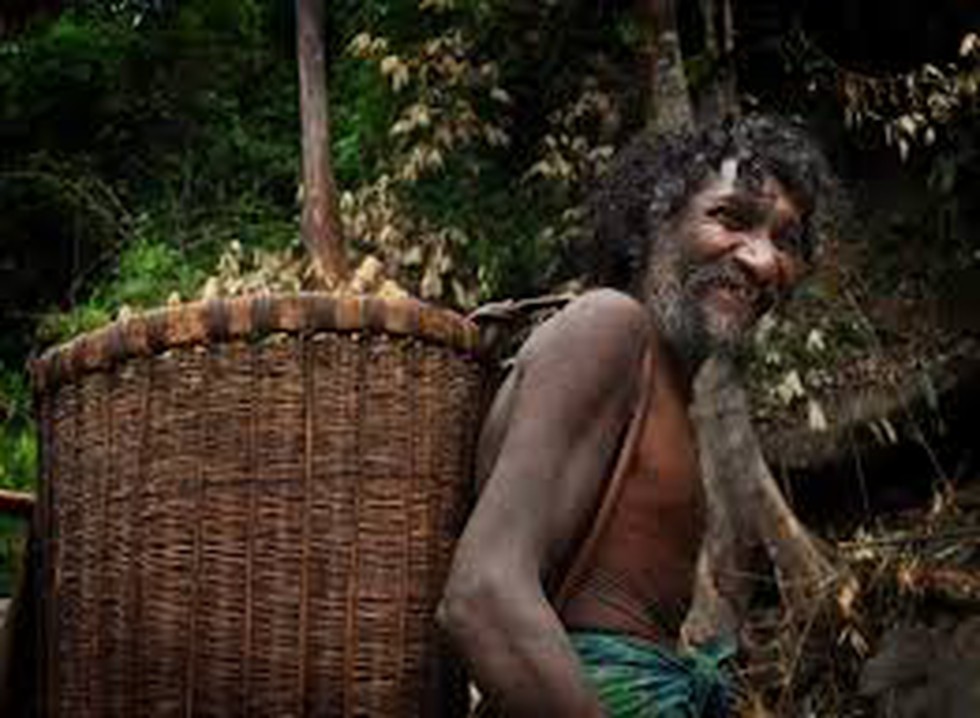
About Cholanaikkan Tribe:
- They are a diminishing tribe of India. With a population of less than 400 members, it is one of the most isolated tribes.
- Location:
- They reside deep inside the Karulai and Chungathara forest ranges of Western Ghats.
- This is in the Nilambur region of the Malappuram district in Kerala.
- They are classified as a Particularly Vulnerable Tribal Group (PVTG).
- The community prefers to stay isolated and away from both agrarian and urban lifestyles.
- They are among those unique tribes that still depend largely on forest produce for their survival.
- Also known as “Caveman of Kerala”, even to the present date, they use natural caves as a safe dwelling space in the forest.
- The community speaks a distinct Dravidian language called Cholanaikkan.
Prelims Pointers
Feb. 27, 2025
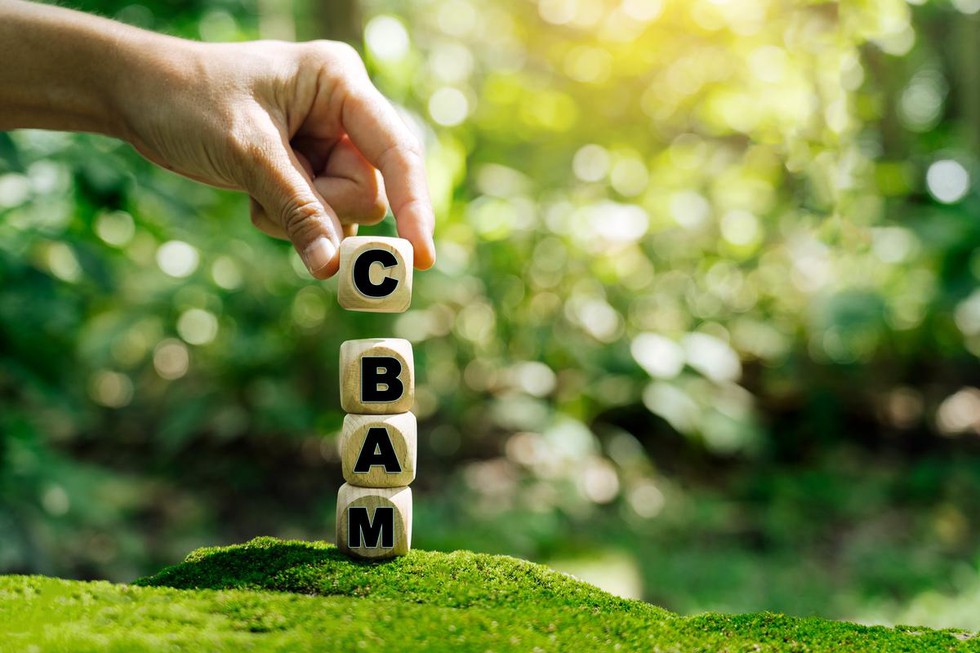
About Carbon Border Adjustment Mechanism (CBAM):
- It is a European Union (EU) tariff on carbon-intensive products.
- It is a new EU instrument for preventing carbon leakage, that is, the shifting of the production of goods to non-EU countries where there is a lower or no carbon cost associated with their production.
- Purpose: To put a fair price on the carbon emitted during the production of carbon-intensive goods that are entering the EU and to encourage cleaner industrial production in non-EU countries
- By confirming that a price has been paid for the embedded carbon emissions generated in the production of certain goods imported into the EU, the CBAM will ensure the carbon price of imports is equivalent to the carbon price of domestic production, and that the EU's climate objectives are not undermined.
- Imports mean any imports to the EU from outside the EU, including e.g., imports of goods ordered online and imports of gifts.
- The CBAM is designed to be compatible with WTO rules.
- Carbon Certificates:
- If implemented as planned, EU importers will have to buy carbon certificates corresponding to the carbon price that would have been paid in the EU if the goods had been produced locally.
- The price of the certificates would be calculated according to the auction prices in the EU carbon credit market.
- The number of certificates required would be defined yearly by the quantity of goods and the embedded emissions in those goods imported into the EU.
- EU importers will declare the emissions embedded in their imports and surrender the corresponding number of certificates each year.
- If importers can prove that a carbon price has already been paid during the production of the imported goods, the corresponding amount can be deducted.
- Companies in countries with a domestic carbon pricing regime equivalent to the EU’s will be able to export to the EU without buying CBAM certificates.
- Implementation Timeline:
- CBAM will apply in its definitive regime from 2026, while the current transitional phase lasts between 2023 and 2025.
- The CBAM commenced in its transitional phase as of 1 October 2023.
- Only reporting obligations arise during the transitional period, and financial obligations apply from 2026.
- Coverage: CBAM will initially cover several specific products in some of the most carbon-intensive sectors at risk of "carbon leakage": iron and steel (including some downstream products such as nuts and bolts), cement, fertilizers, aluminium, electricity, and hydrogen.
Prelims Pointers
Feb. 27, 2025

About Mount Fentale:
- It is a stratovolcano located in Awash National Park in the Oromia Region, Ethiopia.
- It rises approximately 600 m from the floor of the Rift Valley, and the lavas of the volcano cover an oval area of approximately 100 sq km.
- An elliptical caldera, approximately 6 km in diameter, dominates the upper portion of the volcano.
- Recent Earthquake Activity:
- A magnitude 6.0 earthquake hit under Fentale volcano on 14 February 2025.
- It is the strongest earthquake to strike Ethiopia since 1989.
What is a Stratovolcano?
- The stratovolcano is a tall, steep, and cone-shaped type of volcano.
- Unlike flat shield volcanoes like in Hawaii, they have higher peaks.
- At the peak, stratovolcanoes usually have a small crater.
- Stratovolcanoes build up on height by layering lava, ash, and tephra. By definition, they have alternating layers of pyroclastics and lava.
- When ash falls or lava flows, it solidifies and makes a narrower cone.
- They comprise the largest percentage (~60%) of the Earth's individual volcanoes.
- They are usually about half lava and half pyroclastic material, and the layering of these products gives them their other common name of composite volcanoes.
Prelims Pointers
Feb. 27, 2025
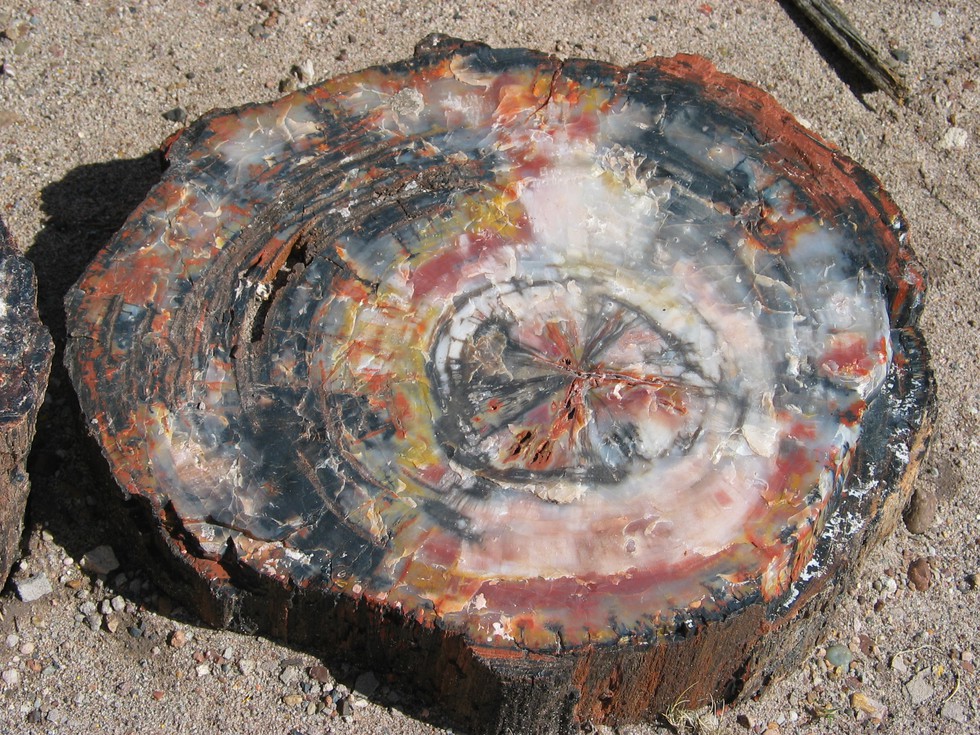
About Petrification:
- Petrification (petros means stone) occurs when the organic matter is completely replaced by minerals and the fossil is turned to stone.
- This generally occurs by filling the pores of the tissue and inter- and intracellular spaces with minerals, then dissolving the organic matter and replacing it with minerals.
- This method reproduces the original tissue in every This kind of fossilization occurs in both hard and soft tissues.
- This typically occurs when the material is buried under sediment and exposed to mineral-rich water over long periods.
- This process is involved in many forms of fossilization and leaves behind many stunning and beautifully preserved fossils.
- An example of this kind of fossilization is petrified wood.
Prelims Pointers
Feb. 27, 2025
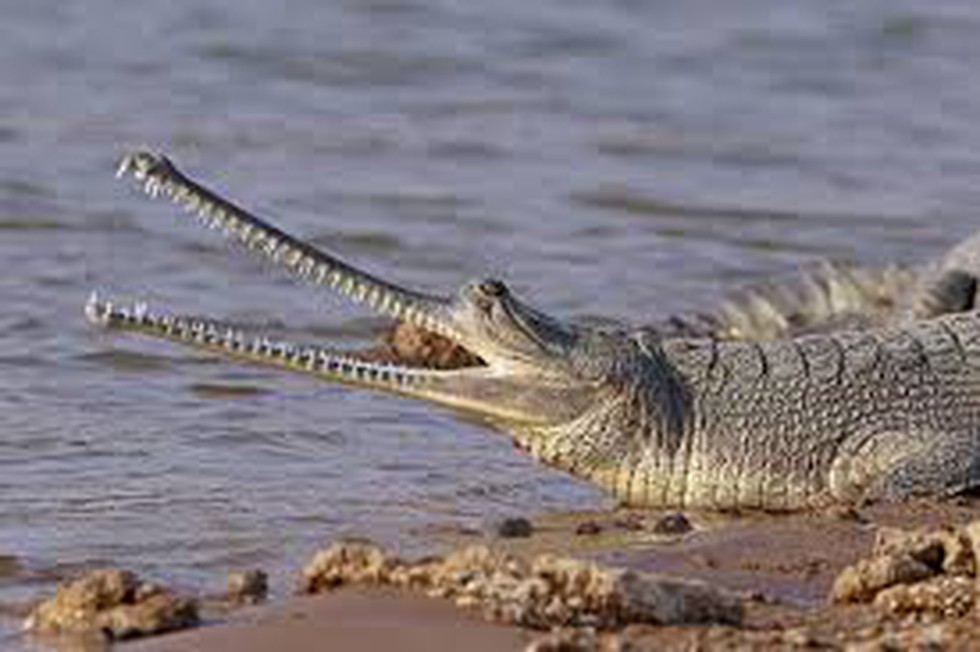
About Gharials:
- It is a freshwater crocodilebelonging to the Crocodylia Order and Crocodylidae Family.
- The name ‘gharial’ comes from the Hindi word ghara, meaning pot or vessel, referring to the bulbous snout tip of adult males, which resembles an inverted pot.
- Distribution: Its range spanned the rivers of Bangladesh, Bhutan, India, Myanmar, Nepal, and Pakistan.
- Their major population occurs in three tributaries of the Ganga River: the Chambal and Girwa Rivers in India and the Rapti-Naryani River in Nepal.
- The Gharial reserves of India are located in three States: Uttar Pradesh, Madhya Pradesh and Rajasthan.
- Features:
- It is one of the largest crocodilian species, with males reaching 16 to 20 feet (5 to 6 meters) in length. Females typically grow to lengths of 11.5 to 15 feet (3.5 to 4.5 meters).
- They have thick skin covered with smooth epidermal scales that do not overlap.
- The snout of the gharial is uniquely the thinnest and most elongated among all the crocodilians.
- In addition, the adult males sport a large bulb at the tip of their snout, called the 'ghara'.
- It is also the most aquatic of all crocodilians, for it never moves far from the water.
- Reproduction: They mate during November–January and lays eggs March–May.
- Threats: Overhunting for skins, trophies, eggs, and traditional medicine
- Conservations Status:
- IUCN: Critically endangered
- CITES: Appendix I
- Wildlife (Protection) Act, 1972: Schedule I
Prelims Pointers
Feb. 27, 2025
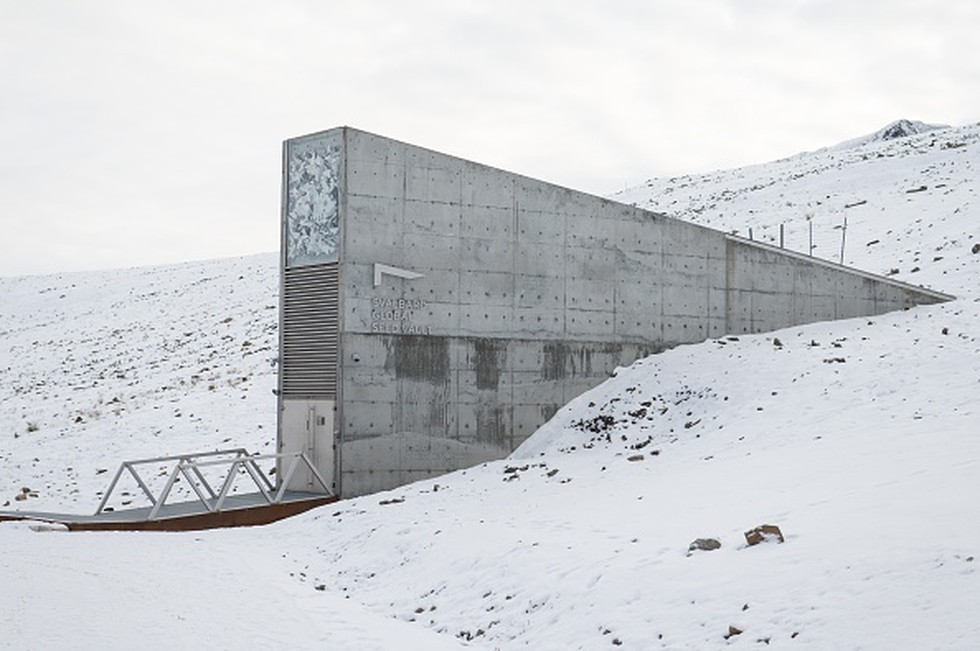
About Svalbard Global Seed Vault:
- It is the largest backup facility for the world’s crop diversity.
- Svalbard is the Norwegian archipelago half way between the Northern pole and Mainland Norway.
- The Seed Vault's objective is to safeguard as much of the world’s unique crop genetic material as possible while also avoiding unnecessary duplication.
- It offers free-of-charge, long-term storage of seed duplicates from international, national and regional gene banks and institutions.
- The ownership of the seeds remains with the depositing gene bank. In the Seed Vault they are stored under so called black box conditions, meaning that only the institution that deposited the seeds has access and is allowed to withdraw them.
- It was set deep inside a mountain to withstand disasters from nuclear war to global warming, in 2008 as a backup for the world’s gene banks that store the genetic code for thousands of plant species.
- It has the capacity to store 4.5 million varieties of crops.
- The facility serves a humanitarian purpose and is part of the international system for conserving plant genetic diversity guided by the UN organisation for Food and Agriculture (FAO).
Prelims Pointers
Feb. 27, 2025
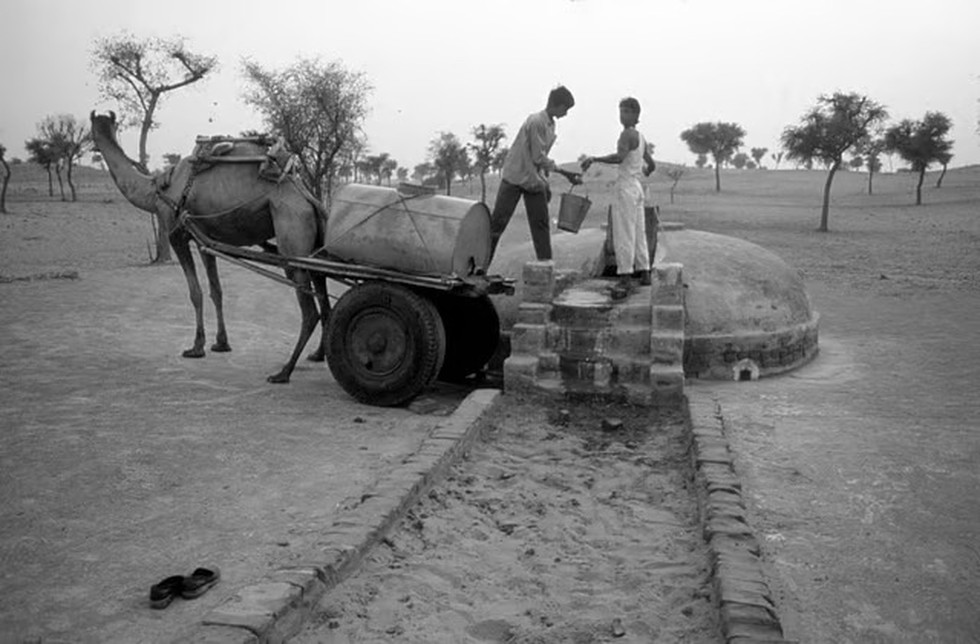
About Kundi Water Harvest System:
- The kundi (also known as a kund) is a traditional rainwater harvesting system that is predominantly found in desert regions in Rajasthan, India.
- This system is designed to capture and store rainwater, which is crucial in arid and semi-arid areas where water is scarce and rainfall is unpredictable.
- Structure:
- It consists of a deep, circular or rectangular pit that is either dug into the ground or constructed above ground.
- It is usually lined with stones, bricks, or other materials to reinforce the structure and prevent seepage.
- The pit is often covered with a lid or stone slab to prevent contamination from debris and to reduce evaporation.
- Rainwater is collected through channels or from rooftops, and then funneled into the kundi, where it is stored for use during the dry season.
- Significance:
- It serves as an efficient method of water conservation, particularly in places where surface water is limited, and access to groundwater is difficult.
- It helps to ensure that water is available for drinking, irrigation, and other domestic purposes when rainfall is scarce.
Prelims Pointers
Feb. 27, 2025
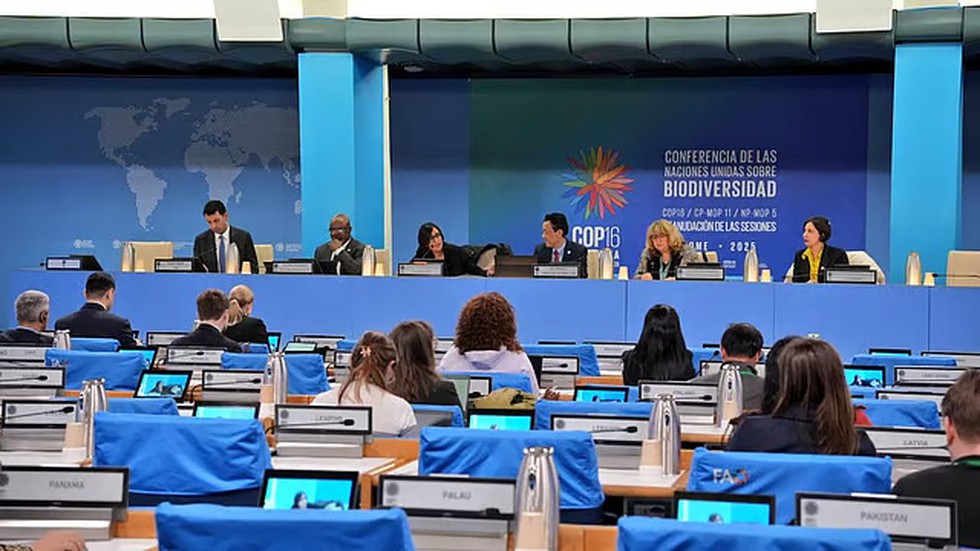
About Cali Fund:
- It is a new international fund has been created to help protect biodiversity.
- It will collect money from private companies. These companies use genetic data from nature in their businesses.
- The Cali Fund will receive money from businesses that rely on Digital Sequence Information (DSI).
- DSI includes genetic data from plants, animals, and microorganisms. Industries like pharmaceuticals, cosmetics, agriculture, and biotechnology use DSI to develop products.
- Under this new system, they will now have to contribute a part of their revenue to support biodiversity efforts.
- The money collected will be used in several ways.
- It will support biodiversity conservation projects, help developing countries implement their biodiversity action plans, and fund scientific research to improve how genetic data is stored and used.
- At least 50 per cent of its resources will go to indigenous peoples and local communities, recognising their crucial role in protecting nature.
- This is the first time that a global biodiversity fund under the UN will receive direct contributions from businesses.
- This fund will be managed by the United Nations Development Programme (UNDP) and United Nations Environment Programme.
- Significance:
- This marks an important step in ensuring industries benefiting from biodiversity also contribute to its conservation.
- It is seen as a key step towards meeting the Kunming-Montreal Global Biodiversity Framework (KMGBF) goal of stopping and reversing biodiversity loss by 2030.
Prelims Pointers
Feb. 27, 2025
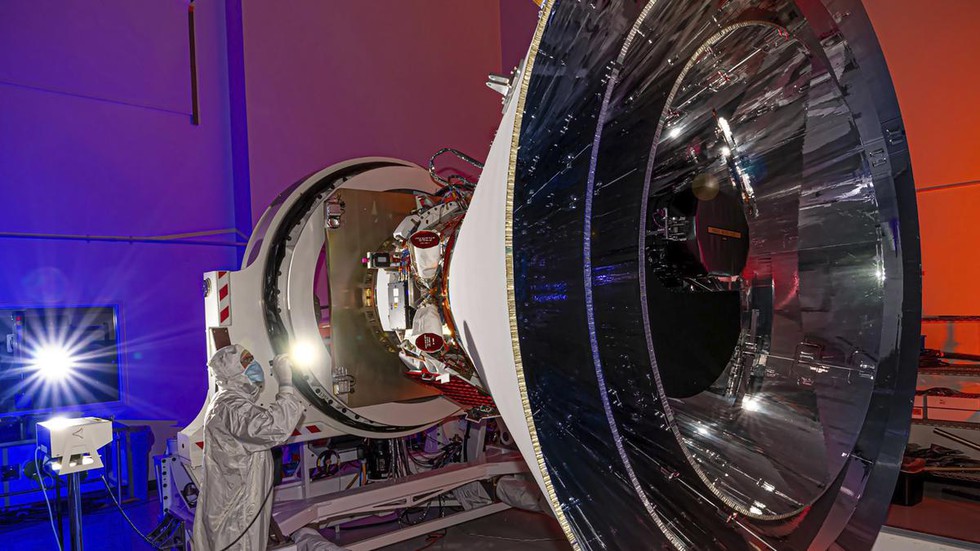
About SPHEREx Telescope:
- The Spectro-Photometer for the History of the Universe, Epoch of Reionization and Ices Explorer (SPHEREx) telescope is a megaphone-shaped telescope.
- Tenure: 2 year
- Aims of SPHEREx:
- It will map the universe while detecting two kinds of cosmic light, optical and infrared.
- It will measure something called cosmic inflation.
- Cosmic inflation refers to a period which took place around 14 billion years ago, during which the universe expanded faster than the speed of light for a fraction of a second.
- It will help better understand things about the formation of the universe, the growth of all galaxies across cosmic history, and the location of water and life-forming molecules in the Milky Way galaxy.
- It will use spectroscopic images to measure the 3D positions of about 450 million galaxies across cosmic history.
- It will complement the work being done by other infrared telescopes in space, such as the James Webb Space Telescope and Hubble Space Telescope.
- Significance of this Initiative:
- Mapping the whole sky enables astronomers to identify promising regions for life and gather large-scale data to separate meaningful patterns from anomalies, making this mission a transformative step in the search for life beyond Earth.
- One can determine the necessary conditions to form biogenic molecules in space. In turn, this can tell about a crucial step in how life came to be.
Feb. 26, 2025
Prelims Pointers
Feb. 26, 2025
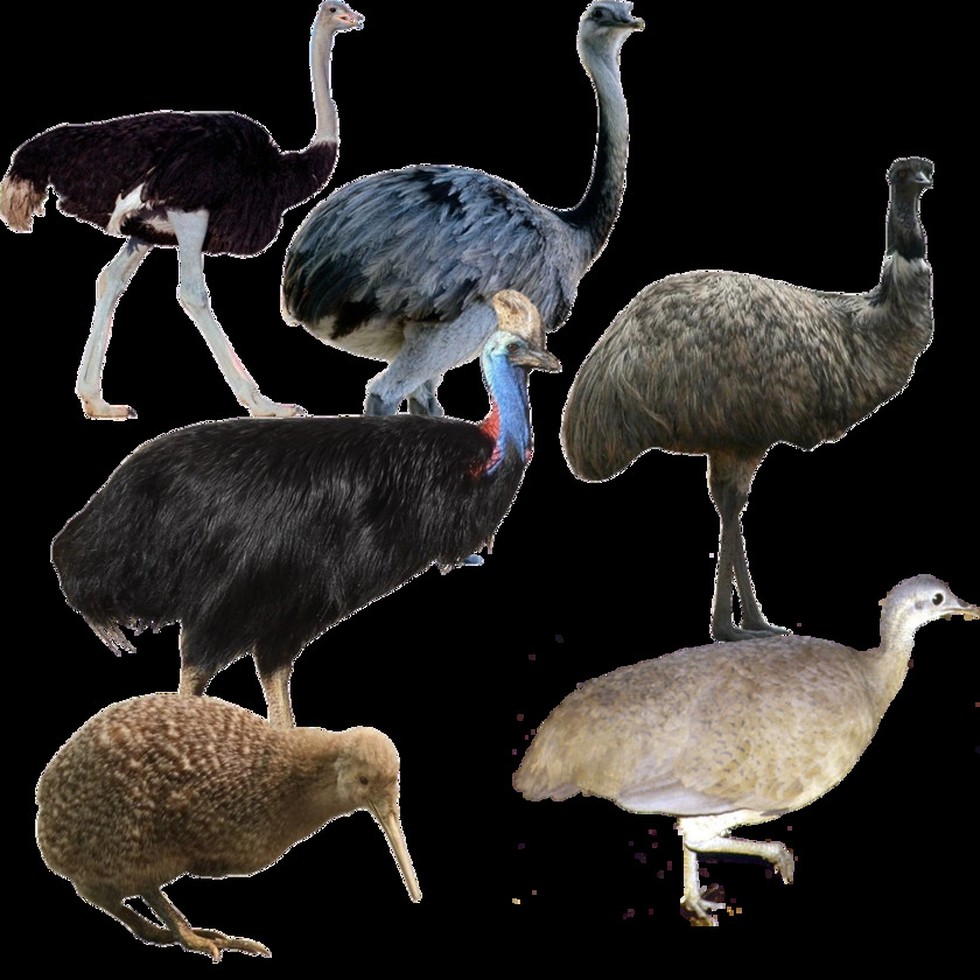
About Palaeognath Birds:
- These are grouped together on the basis of their distinctive palate morphology, from which they receive their name ("old jaw").
- Most of the birds classified in the Palaeognathae are also flightless, but not all flightless birds are classified in the Palaeognathae.
- These 50 bird species are very different from the other birds on the planet.
- They are the largest and heaviest avian specimens on Earth and may represent some of the first birds to evolve from dinosaurs.
- These birds are classified into two groups:
- Tinamiformes: These species have a keeled sternum and can fly (weakly), which include the tinamous of South and Central America; and the
- Ratitae, or ratite birds: They have flat sterna and reduced wings, and cannot fly at all.
- Examples: The African ostrich, the rhea of South America the Australian emu and New Guinea cassowary; and the kiwi of New Zealand.
Prelims Pointers
Feb. 26, 2025
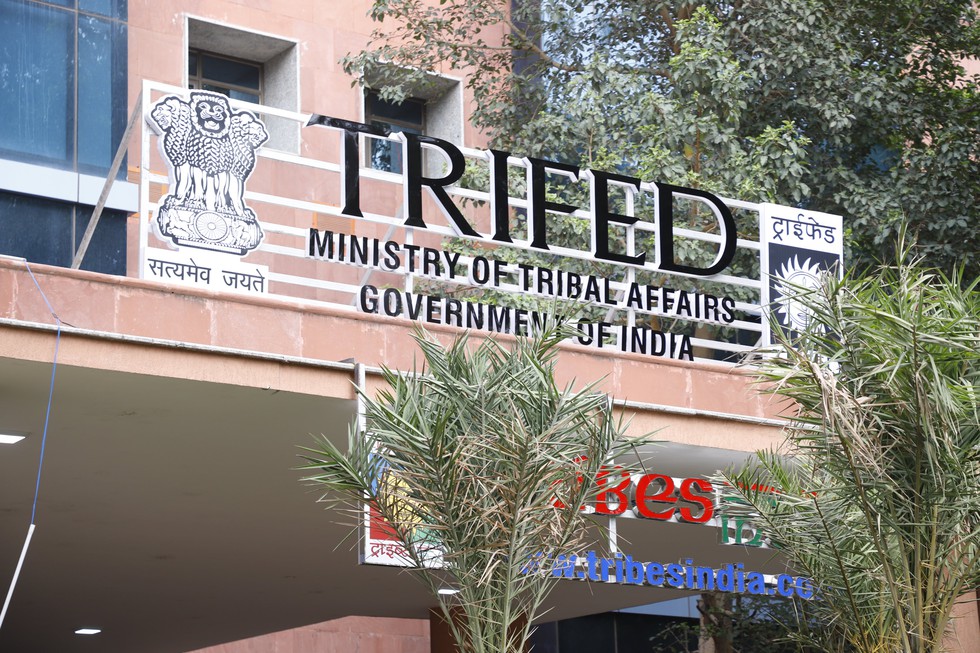
About TRIFED:
- It is an organization under the Ministry of Tribal Affairs, Government of India, dedicated to the socio-economic development of tribal communities.
- It was established in 1987 under the Multi-State Cooperative Societies Act, 1984, by the Government of India as a national-level cooperative body.
- Mandate: Bringing about the socio-economic development of the tribals of the country by institutionalizing the trade of Minor Forest Produce (MFP) & Surplus Agricultural Produce (SAP) collected/cultivated by them.
- Objectives:
- To act as a facilitator and service provider for the tribal community to uplift production
- Provide training to enhance artistic skills with modern technology to meet the requirements of the global market
- To increase the promotion of tribal art and crafts for a stable livelihood
- To identify target groups to monitor and evaluate the process and activities and provide input to the Ministry
- The approach involves capacity building of the tribal people through sensitization, formation of Self Help Groups (SHGs), and imparting training to them for undertaking a particular activity, exploring marketing possibilities in national as well as international markets, creating opportunities for marketing tribal products on a sustainable basis, and creating a brand.
- Retail Marketing:
- TRIFED has been doing the retail marketing of tribal products under the brand name of TRIBES INDIA.
- TRIFED promotes and creates a sustainable market through retail outlets, exhibitions such as Aadishilp, Aadichitra, OCTAVE; international fairs, and e-marketing.
- TRIFED has also been entrusted by the Govt. of India to implement its proposed Minimum Support Price Scheme for Minor Forest Produce.
Prelims Pointers
Feb. 26, 2025

About Qualified Institutional Placement (QIP):
- It is a capital-raising mechanism through which public listed companies use to issue equity shares or convertible securities exclusively to Qualified Institutional Buyers (QIBs).
- QIBs include mutual funds, venture capital funds, pension funds, and other institutional investors.
- A QIP is, at its core, a way for listed companies to raise capital without having to submit legal paperwork to market regulators.
- It is common in India and other Southeast Asian countries.
- It provides a quicker and cost-effective alternative to traditional public offerings (IPOs and FPOs) while ensuring minimal dilution of management control.
- Why was QIP introduced in India?
- Earlier, since raising finance in the domestic market involved a lot of complications, Indian companies used to raise funds from the overseas markets.
- So to prevent this, SEBI in 2006 introduced the QIP process so as to make the raising of funds easier in the domestic market.
- QIP allows companies to raise funds domestically, reducing dependence on foreign investors through instruments like American Depository Receipts (ADRs), Global Depository Receipts (GDRs), or Foreign Currency Convertible Bonds (FCCBs).
Prelims Pointers
Feb. 26, 2025
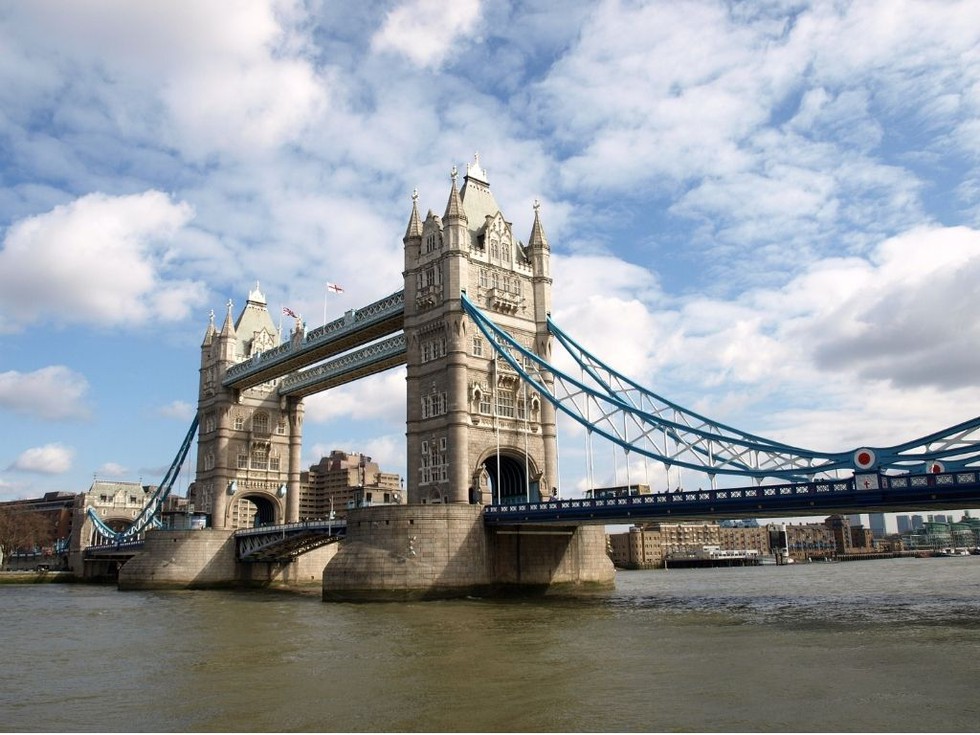
About Thames River:
- It is a 346-km river that flows through southern England.
- It is the longest river in England and the second longest in the United Kingdom, after the River Severn.
- Course:
- Its source is at Thames Head, near Kemble in the Cotswold Hills, Gloucestershire County.
- It flows into the North Sea via the Thames Estuary.
- The Nore is the sandbank that marks the mouth of the Thames Estuary and the confluence point of the Thames and the North Sea.
- The Thames’ basin covers an area of approximately 16,130 sq.km.
- The river passes numerous popular cities along its way, such as London, Reading, Hendley-on-Thomas, Windsor and Oxford, where it is also called the Isis River.
- It provides two-thirds of London’s drinking water.
- It has been a vital transportation route since ancient times, facilitating trade and commerce between London and other parts of England.
- There are 16 bridges that cross the River Thames in Greater London alone, most prominently the Golden Jubilee Bridges and the Millennium Bridges for pedestrians.
- Main Tributaries: Lea, Leach, Churn, Coln, Windrush, Kennet, Evenlode, Ock, and Loddon.
Prelims Pointers
Feb. 26, 2025
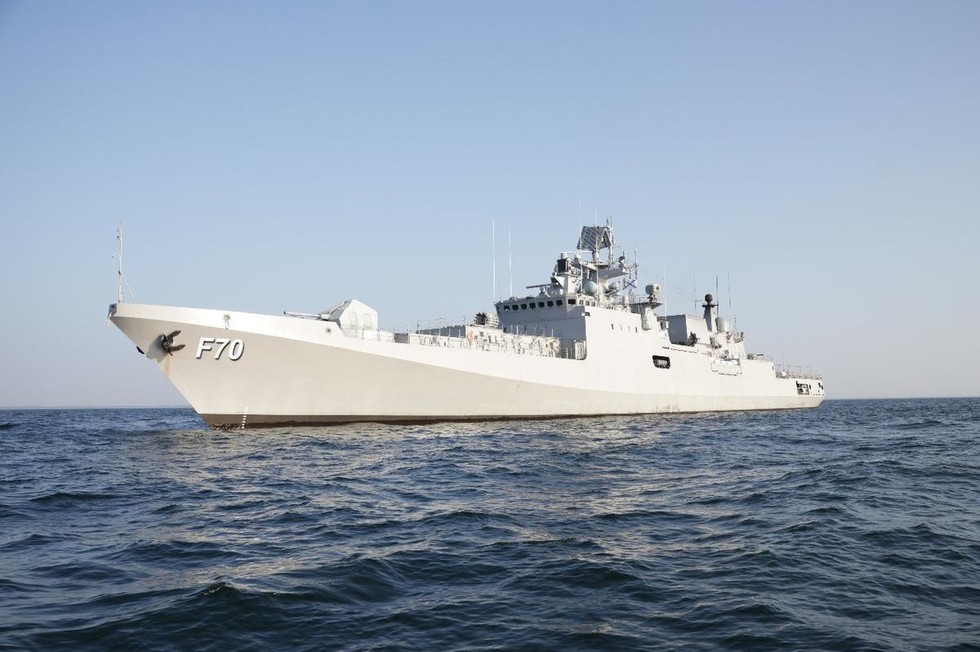
About INS Tamal:
- It is a state-of-the-art stealth guided missile frigate.
- It is an upgraded Krivak-III class frigate, and is part of a significant $2.5 billion deal between India and Russia for four stealth frigates, two to be built in Russia and the other two to be manufactured at Goa Shipyard Limited.
- INS Tushil, the first of this, was commissioned into the Indian Navy in December 2024.
- INS Tamal will be the last warship to be commissioned outside India or imported. The country now designs and constructs its own warships.
- Following the delivery of INS Tamal, the Indian Navy will receive two additional frigates being constructed at Goa Shipyard Limited in India.
- Key Features of INS Tamal:
- It is designed for blue water operations, capable of engaging in various naval warfare dimensions, including air, surface, underwater and electronic warfare.
- It measures 125 meters in length and has a displacement of 3,900 tonnes, blending Russian design with Indian technology.
- Approximately 26% of its components are sourced from Indian manufacturers.
- Armament:
- The frigate is equipped with a 76mm Super Rapid Gun Mount (SRGM), which enhances its naval artillery capabilities.
- Additionally, it has two Indigenous Triple Torpedo Launchers (ITTL) designed for 324mm torpedoes, allowing for effective anti-submarine warfare operations.
- Missile Systems: INS Tamal carries an array of missile systems, including BrahMos supersonic cruise missiles and vertically launched Shtil surface-to-air missiles, providing it with formidable offensive and defensive capabilities.
Prelims Pointers
Feb. 26, 2025

About Dwarf Galaxies:
- They are small galaxies that typically contain just a few billion stars, unlike their larger cousins, which can hold hundreds of billions.
- They are the most abundant type of galaxy in the universe but are difficult to detect due to their low luminosity, low mass, and small size.
- They are most commonly found in galaxy clusters, often as companions to larger galaxies.
- Our Milky Way galaxy is orbited by more than 20 dwarf galaxies.
- They are thought to have been created by gravitational forces in the early stages of the creation of these larger galaxies, or as a result of collisions between galaxies, forming from streams of material and dark matter ejected from the parent galaxies.
- Because most of them come from galaxy collisions, many dwarf galaxies are grouped into irregular shapes.
- However, some dwarf galaxies have spiral arms or look like mini-elliptical galaxies.
Prelims Pointers
Feb. 26, 2025

About SWAYATT Initiative:
- It was launched on 19th February, 2019.
- It was conceptualised with a clear objective of invigorating participation of women-led enterprises and youth in public procurement.
- SWAYATT is the GeM portal’s commitment to enhance ease of doing business and establish direct market linkages to annual public procurement for startups, women entrepreneurs, Micro & Small Enterprises (MSEs), Self Help Groups (SHGs) and youth, especially those from backward sections of the society.
- It is rooted in GeM’s foundational pillar of social inclusion.
Government e Marketplace:
- It is an online market platform that was set up in 2016 to facilitate the procurement of goods and services by government ministries, departments, public sector undertakings (PSU) etc.
- It has been envisaged as the National Procurement Portal of India.
- This portal was developed by the Directorate General of Supplies and Disposals (Ministry of Commerce and Industry) with technical support from the National e-governance Division (Ministry of Electronic and Information Technology).
- It is a completely paperless, cashless and system-driven e-marketplace that enables procurement of common-use goods and services with minimal human interface.
Prelims Pointers
Feb. 26, 2025
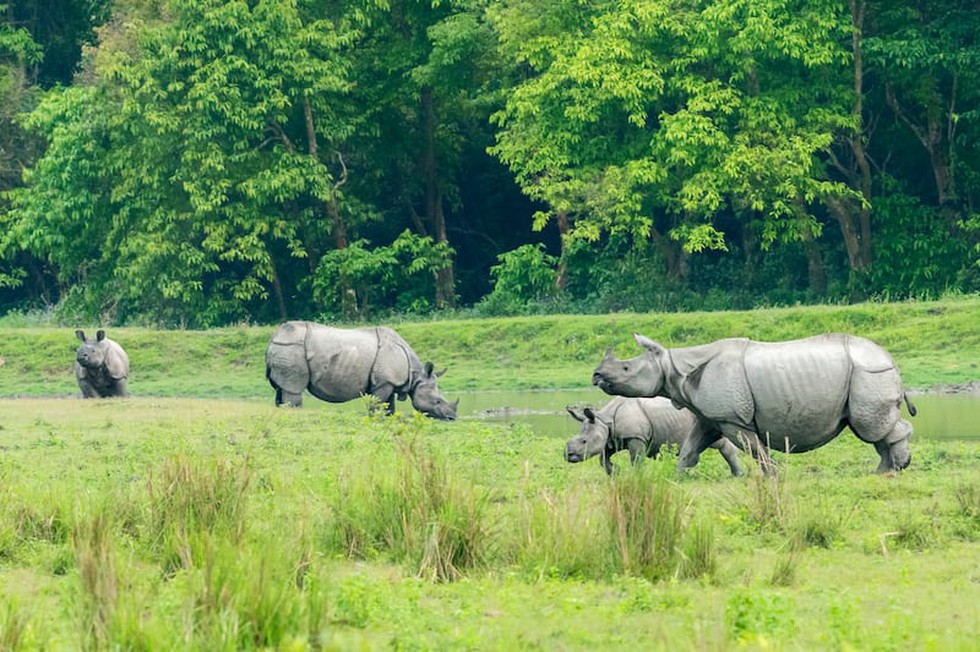
About Kaziranga National Park:
- It is situated in
- It is the single largest undisturbed and representative area in the Brahmaputra Valley floodplain.
- In 1985, the park was declared a World Heritage Site by UNESCO.
- Terrain: It is of sheer forest, tall elephant grass, rugged reeds, marshes, and shallow pools.
- Rivers:The River Diffalu, a tributary of the Brahmaputra, flows through the National Park while another tributary, Moradifalu, flows along its southern boundary.
- Flora: It is primarily famous for its dense and tall elephant grasses intermixed with small swamplands. It also includes an abundant cover of water lilies, water hyacinths and lotus.
- Fauna:Many endangered and threatened species like Rhino, Tiger, Eastern swamp deer, Elephant, Buffalo, Hoolock gibbon, Capped langur and Gangetic River dolphin are commonly found in the habitat.
- It is inhabited by the world's largest population of one-horned rhinoceroses, as well as many mammals.
Prelims Pointers
Feb. 26, 2025
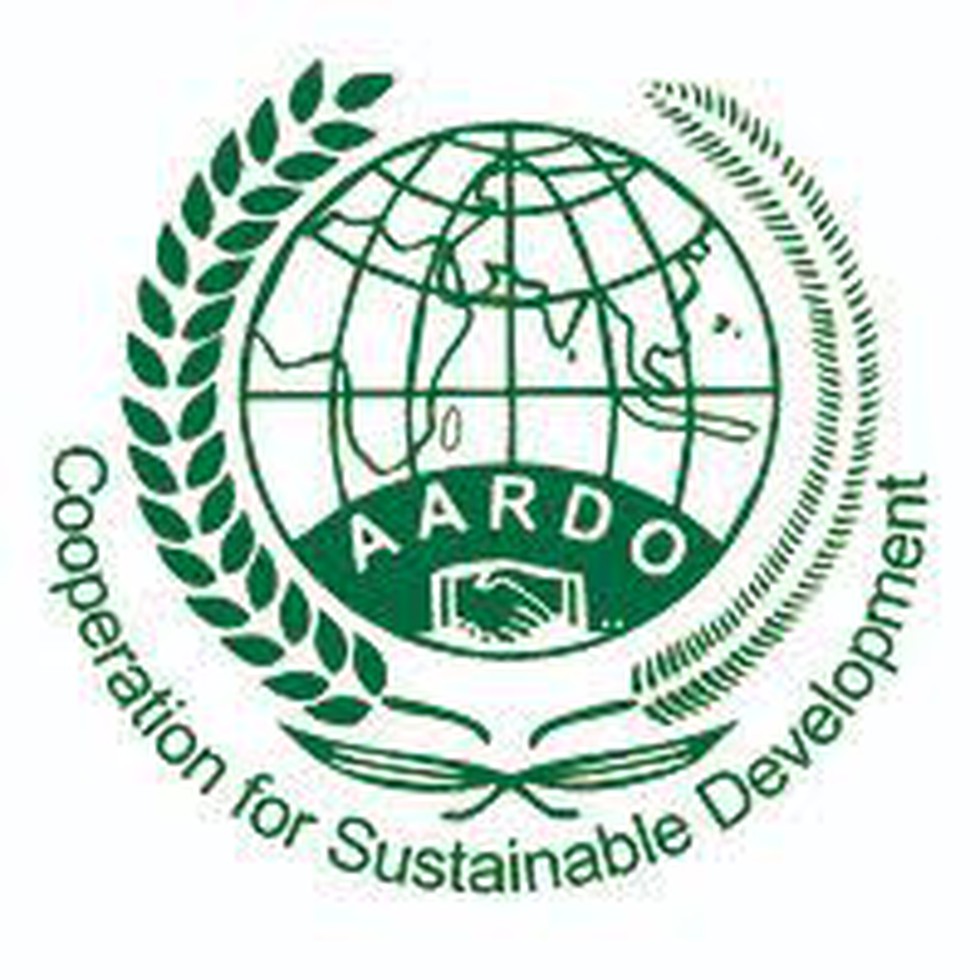
About African-Asian Rural Development Organization:
- It is an autonomous inter-governmental Organization comprising country governments of Africa and Asia which was established in 1962.
- The organization was set up with a view to promote coordinated efforts, exchange of experiences and cooperative action for furthering the objectives of development of the rural areas.
- The membership of the organization is open to all countries of the Afro-Asian region provided that it is a full or associate member of the United Nations or any of its specialised agencies, organisations and foundations concerned with the development of rural communities.
- Member countries: Currently it comprises 32 countries of Africa and Asia as full members and 3 associate members.
- Functions:
- To collaborate with the appropriate international and regional organizations, including UN agencies, the national bodies, governmental or non-governmental
- To organize and facilitate the conduct of international, regional and in-country training programmes to strengthen the institutional capacity of Afro-Asian member countries in sustainable agriculture and rural development
- To initiate research and action research studies of specific or common interest and disseminate disaggregated data/statistics and information to member countries
- To provide technical and financial supportto its member countries to undertake pilot projects for experimentation and replication
- It enjoys observer status with international organisations like Food and Agriculture Organization (FAO), International Fund for Agricultural Development (IFAD), United Nations Conference on Trade and Development (UNCTAD), United Nations Educational, Scientific and Cultural Organization (UNESCO), United Nations Development Programme (UNDP).
- Headquarters:New Delhi, India
Prelims Pointers
Feb. 26, 2025

About PUNCH Mission:
- The Polarimetry to Unify the Corona and Heliosphere (PUNCH) mission will be launched by SpaceX .
- Components of PUNCH Mission:
- It will be a constellation of four, suitcase-sized satellites each weighing about 64 kg sent to the Low Earth Orbit (LEO).
- It will have three Wide Field Imagers (WFI) and one Narrow Field Imager onboard. Once every four minutes, each of the four cameras will capture three raw images using different polarising filters.
- In addition, each camera will capture an unpolarised image once every eight minutes.
- Objectives of PUNCH Mission:
- It is the first time that a solar mission has been specifically designed to make use of the polarisation of light to measure the corona and solar wind, that too, in 3D.
- It will provide scientists with new information which could lead to more accurate predictions about the arrival of space weather events on Earth and impact on humanity’s robotic explorers in space.
- It will measure polarised light using polarising filters, enabling scientists to look into the inner solar system.
- PUNCH’s four-camera setup will operate as a single, virtual instrument to generate large-scale imagery data, making it a unique information-loaded 3D image of the solar corona.
- Time Period: The expected mission life is two years.
Feb. 25, 2025
Prelims Pointers
Feb. 25, 2025
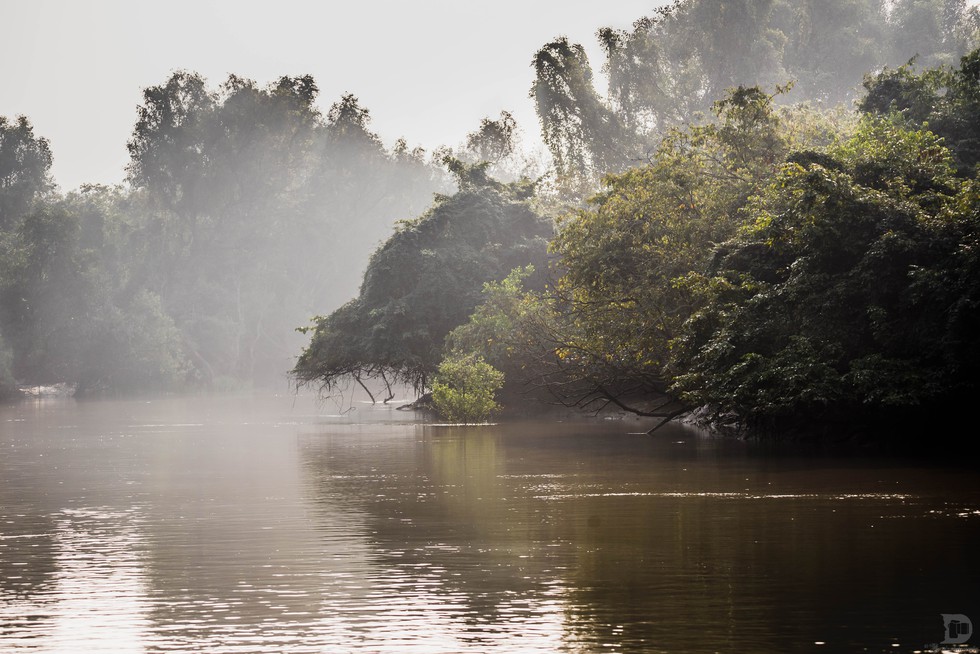
About Bhitarkanika National Park:
- It is located in the Kendrapara district of Odisha.
- It is essentially a network of creeks and canals which are inundated with waters from Brahmani, Baitarani, Dhamra and Patasala rivers forming a unique ecosystem.
- It houses a variety of brooks, backwaters, estuaries, deltas, and mud huts.
- It is also designated as the second Ramsar site in Odisha after the Chilika Lake.
- It is spread over a vast area of 672 sq.km.
- It is India’s second largest mangrove ecosystem after the Sunderbans.
- Proximity to the Bay of Bengal makes the soil of the national park enriched with salt.
- The vegetation and species of the sanctuary are comprised of those that are mainly found in the tropical and subtropical intertidal regions.
- Flora: Mangrove species, casuarinas, and grasses like the indigo bush.
- Fauna:
- It is home to the largest congregation of the endangered Salt Water Crocodile in the country.
- The Gahirmatha Beach, which forms the boundary of the park in the east, is the largest colony of the Olive Ridley Sea Turtles.
- It is also home to numerous animals like hyenas, wild boar, Chitals, Sambar, Spotted Deer, Wild Boar, Jungle cat, Wild Pigs, etc., and migratory birds, which make it their home during the winter season, lending a vibrant hue to the ecosystem.
Prelims Pointers
Feb. 25, 2025
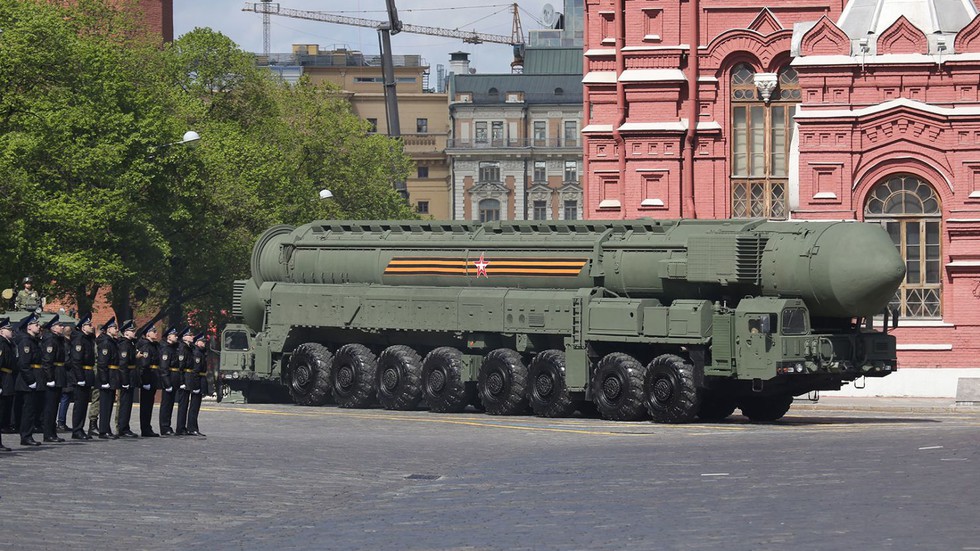
About RS-24 Yars:
- The Yars RS-24 (NATO designation SS-29) is a Russian intercontinental ballistic missile (ICBM) system.
- It is believed to have entered into service in February 2010.
- It is reported to be designed similarly to Russia’s SS-27 (Topol M) ICBM and the Bulava (SS-NX-32) SLBM.
- Features:
- It is three-staged, solid-fueled, and can be launched from a silo or mobile launcher.
- The missile is estimated to be 22.5 meters in length and 2 meters in diameter.
- The total launch weight of the RS-24 is assessed to be 49,000 kg and is expected to have a minimum range of 2,000 km and a maximum of 10,500 km.
- The missile uses a guidance upgraded system of the inertial and Glonass systems.
- The missile can be armed with up to 10 Multiple Independently Targetable Reentry Vehicles (MIRVs), each containing a thermonuclear warhead weighing 300 kilotons.
- It has the capability to manoeuvre during flight and deploy both active and passive decoys, which gives Yars an advantage against modern missile defence systems.
Prelims Pointers
Feb. 25, 2025
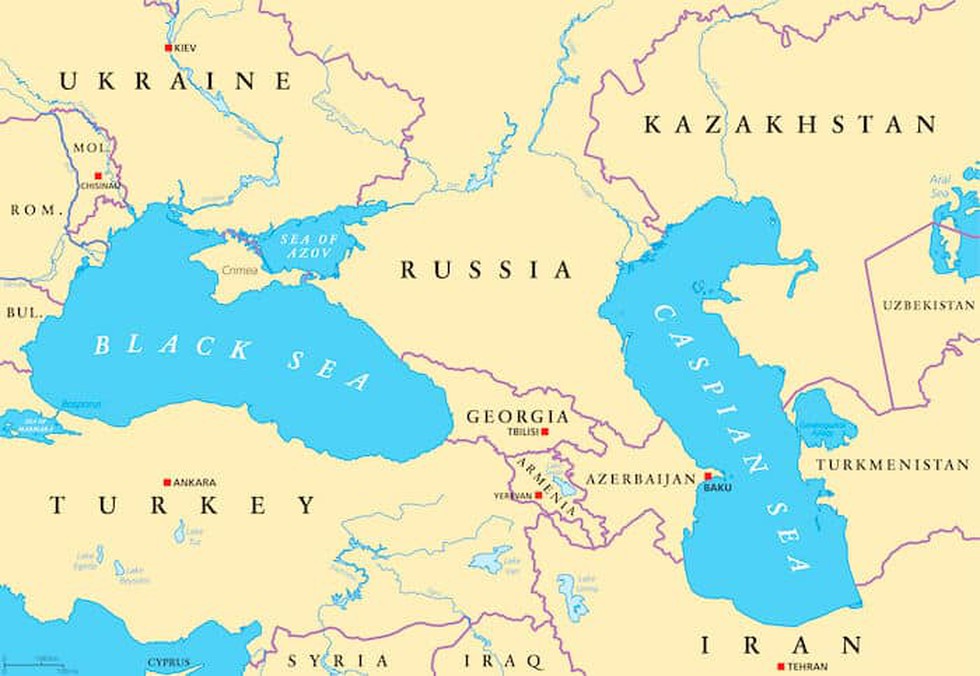
About Caspian Sea:
- It is the world’s largest water body that is enclosed or bordered by land on all sides.
- This massive lake is located between Asia and Europe.
- The sea’s name derives from the ancient Kaspi peoples, who once lived in Transcaucasia to the west.
- It is an endorheic basin (drainage basin without an outflow).
- It covers a total surface area of about 386,400 sq.km. and is about 1,200 km long and 320 km wide.
- Bordering countries: It is bordered by Russia and Azerbaijan on the west, Kazakhstan and Turkmenistan on the north and east, and Iran on the south.
- The composition of the water of the Caspian Sea also varies from almost fresh in the northern parts of the lake to saltier southwards.
- The mean salinity of the Caspian Sea is now about one-third that of the oceans.
- Three major rivers—the Volga, the Ural, and the Terek—empty into the Caspian from the north.
- Baku, the capital of Azerbaijan, is the largest port on the Caspian. Another important city along the Caspian is Iran’s Nowshahr.
- The sea contains as many as 50 islands, most of them small. The largest are Chechen, Tyuleny, Morskoy, Kulaly, Zhiloy, and Ogurchin.
- The sea is also known for its abundance of energy resources (oil and natural gas reserves in offshore fields and onshore on the coast of the sea).
- It is the source of most of the world’s caviar.
Prelims Pointers
Feb. 25, 2025
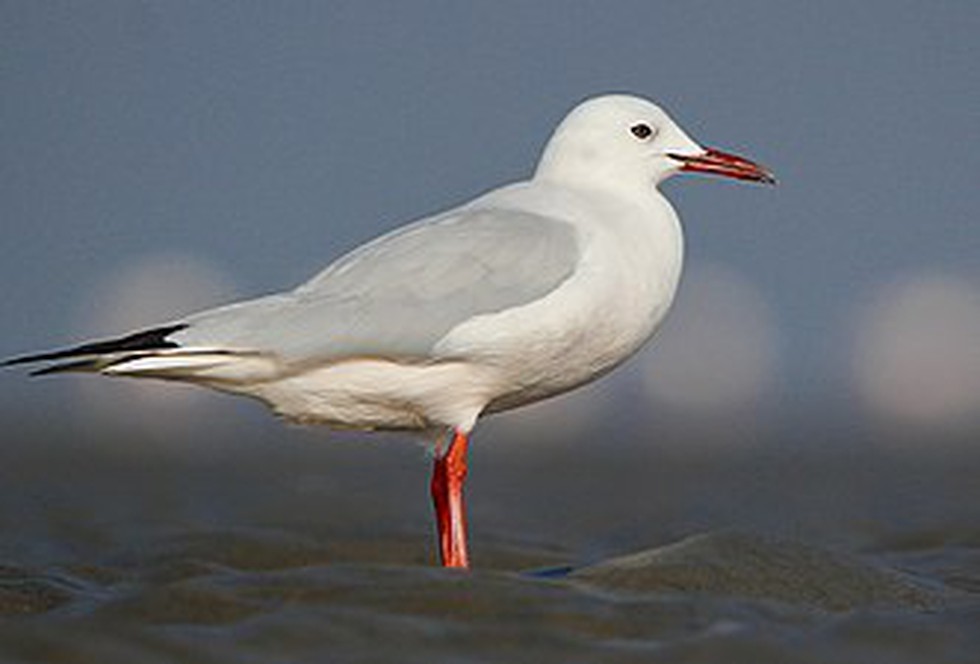
About Slender-Billed Gull:
- It is a medium-sized seabird
- Scientific Name: Chroicocephalus genei
- Distribution:
- It breeds very locally around the Mediterranean and the north of the western Indian Ocean (e.g. Pakistan) on islands and coastal lagoons.
- Most of the population is somewhat migratory, wintering further south to North Africa and India, and a few birds have wandered to Western Europe.
- In India, it is considered a regular along the western coast with several records from wetlands of northern India.
- Features:
- It is 37 to 40 cm long with a 90 to 102 cm wingspan.
- It has a pale grey body, a white head and breast, and black tips to the primary wing feathers.
- The head and dark red bill have an elongated tapering appearance, and this bird also appears long-necked.
- The legs are dark red, and the iris is yellow.
- About half of the slender-billed gull's food is fish. It flies a few metres above the surface of the water and dives into the water when it sees suitable prey.
-
- Conservation Status:
- IUCN Red List: Least Concern
- Conservation Status:
Pallikaranai Marshland:
- It is a freshwater marsh and partly saline wetland situated about 20 kilometres south of the city of Chennai, Tamil Nadu.
- It serves as an aquatic buffer of the flood-prone Chennai and Chengalpattu
- It encompasses 65 wetlands through two outlets, viz., Okkiyam Madavu and the Kovalam Creek, and falls into the Bay of Bengal.
- On its eastern periphery, the marsh is flanked by the Buckingham Canal.
- Parts of the marsh are well below the mean sea level and qualify as low-lying basins.
- It is one of the Ramsar sites in India.
Prelims Pointers
Feb. 25, 2025

About Spices Board:
- It is a statutory body constituted in 1987 under the Spices Board Act 1986, with the merger of the erstwhile Cardamom Board (1968) and Spices Export Promotion Council (1960).
- It is one of the five Commodity Boards functioning under the Ministry of Commerce & Industry.
- It is an autonomous body responsible for the export promotion of the 52 scheduled spices and development of Cardamom (Small & Large).
- The Board is an international link between the Indian exporters and the importers abroad.
- It enhances industry regulations, quality control, and global standards to boost sustainable spice exports and market growth.
Prelims Pointers
Feb. 25, 2025
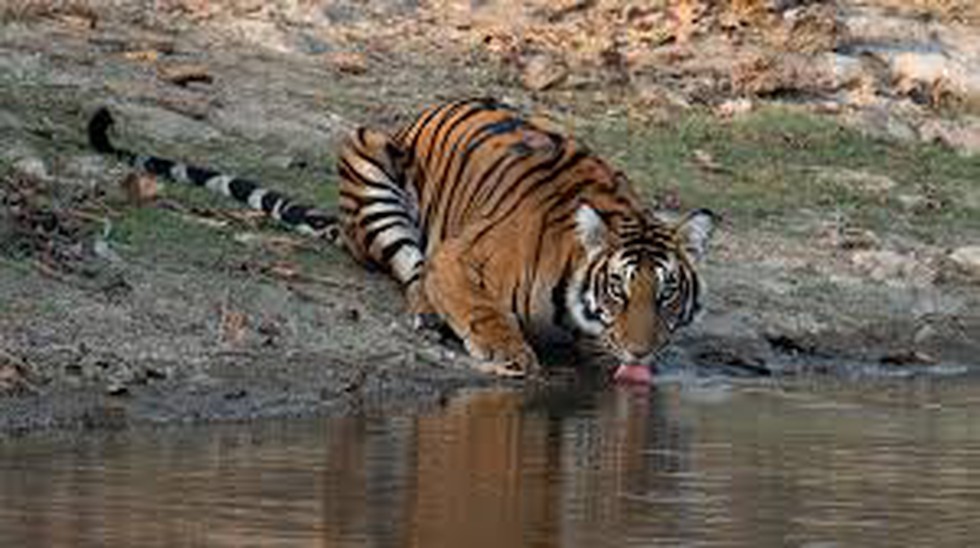
About Kalakkad – Mundanthurai Tiger Reserve:
- It is located in the Southern Western Ghats.
- It includes three main sanctuaries: Kalakad Sanctuary, Mundanthurai Sanctuary and a part of Kanyakumari Sanctuary.
- It is nestled between Kerala and Tamil Nadu.
- The Agastya Malai Hill Range forms the core area of the sanctuary and is part of one of the world's 18 biodiversity hotspots.
- It is also known as the “River Sanctuary”, with as many as 14 rivers originating from this Tiger Reserve.
- Terrain: Undulating with several valleys and porous rocks.
- Vegetation:
- It varies from thorny shrubs to lush evergreen forests.
- It also consists of savannah woodlands, and grasslands.
- There are tea and coffee plantations within the reserve.
- Flora: Important species include Sarcandra, Paphiopedulum, druryi, Hopea parviflora, Hopea utilis, Calophylum elatum, Cullenia exarillata, etc.
- Fauna:Tiger, leopard, rusty spotted cat, sloth bear, elephant, gaur, sambar, spotted deer, mouse deer, nilgiri langur, slender loris, bonnet macaque, lion tailed macaque, etc.
Prelims Pointers
Feb. 25, 2025

About Selenium:
- It is a mineral found in the soil and naturally appears in water and some foods.
- Soil and ground water contain inorganic forms of selenium that plants accumulate and convert to organic forms, mostly selenomethionine and selenocysteine and their methylated derivatives.
- Selenium is a constituent of 25 selenoproteins, including thioredoxin reductases, glutathione peroxidases, and selenoprotein P.
- Selenoproteins play critical roles in thyroid hormone metabolism, DNA synthesis, reproduction, and protection from oxidative damage and infection.
- Human body cannot produce selenium on its own but needs only a small amount of it.
- The Recommended Dietary Allowance (RDA) of selenium for adult men and women 19+ years of age is 55 micrograms daily. Women who are pregnant and lactating need about 60 and 70 micrograms daily, respectively.
- Food Sources of selenium: Protein rich foods from animals are generally good sources of selenium. Seafoods, organ meats, and Brazil nuts are the foods highest in selenium.
Prelims Pointers
Feb. 25, 2025

About Black Plastic:
- It is a type of plastic used to make everyday items like food trays, containers, and utensils.
- It is often made from recycled electronic waste such as computers, TVs and appliances.
- These are more likely to contain unregulated amounts of toxic chemicals including heavy metals and flame retardants.
- The issue is that these electronics typically contain substances such as the flame retardant bromine; antimony; and heavy metals such as lead, cadmium, and mercury.
- Impact on human health:
- The aforementioned substances and heavy metals are known to be toxic to humans at high levels of exposure.
- Children are particularly vulnerable as they often come into prolonged contact with toys that could expose them to harmful chemicals through direct handling or ingestion.
- Toxic chemicals in black plastic kitchen utensils could leach into food during heating, compounding the risk of exposure for households using these products regularly.
- Studies have shown that chemicals in black plastic, such as BPA and phthalates, disrupt the endocrine system, leading to potential reproductive health issues, obesity, and diabetes.
- It is difficult to recycle and often ends up in landfills or incinerators, releasing toxic substances like dioxins and furans into the air.
Prelims Pointers
Feb. 25, 2025
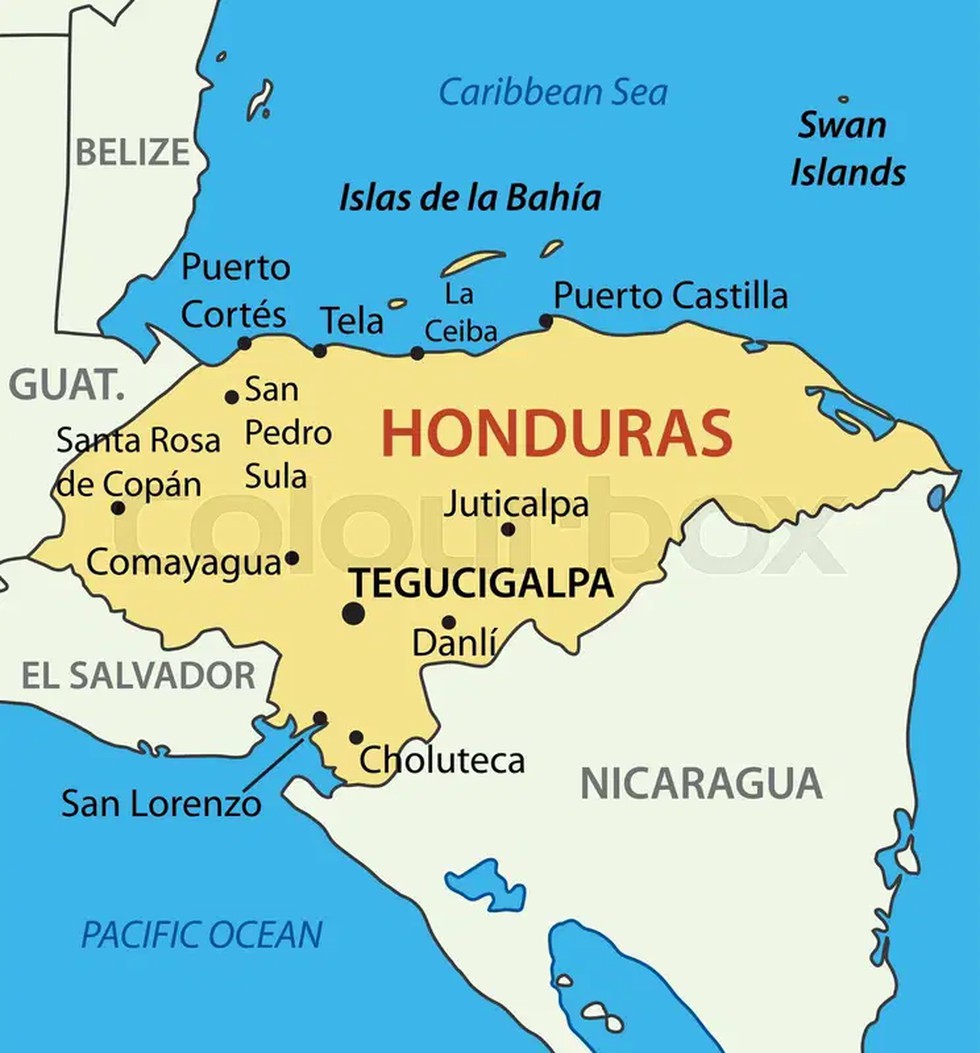
About Honduras:
- It is located in Central America.
- It is bordered by Guatemala to the west; by El Salvador to the southwest; and by Nicaragua to the southeast.
- It is also bounded by the Pacific Ocean at the Gulf of Fonseca to the south and by the Caribbean Sea at the Gulf of Honduras to the north.
- Climate: The climate is generally hot, with high humidity in the tropical coastal lowlands becoming modified by elevation toward the interior.
- Terrain: More than three-fourths of the land area of Honduras is mountainous.
- Highest Peak:Mount Las Minas.
- Major Rivers: The Coco River forms the border with Nicaragua and other important rivers are Patuca & Ulúa.
- The major bodies of water are Lake Yojoa, which is the only significant lake in the entire nation, and the Caratasca Lagoon in the northeast.
- Natural Resource: Timber, gold, silver, copper, lead, zinc, iron ore, antimony, coal, fish, hydropower.
- Capital: Tegucigalpa
Prelims Pointers
Feb. 25, 2025
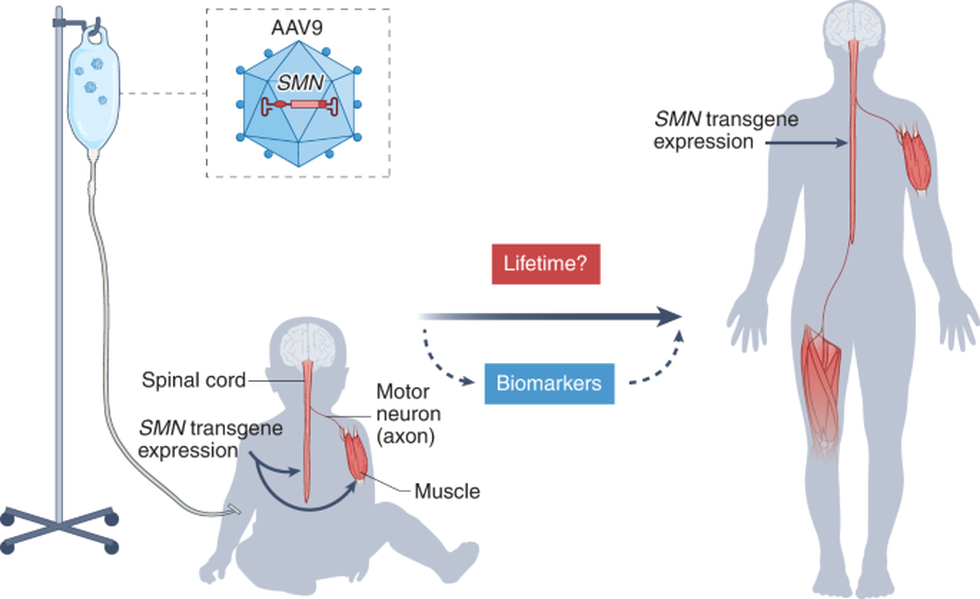
About Spinal Muscular Atrophy:
- It is a debilitating genetic condition which affects motor neurons that control movement, and leads to progressive muscle weakening.
- Types of SMA: There are five subtypes of SMA - Type 0, 1, 2, 3, 4. Healthcare providers classify them based on the age of onset, as well as the severity and life expectancy.
- Symptoms:
- Its symptoms vary and may be mild or disabling, but involve a weakness of the muscles that control movement. Involuntary muscles are not affected, such as those in the heart, blood vessels and digestive tract.
- The weakness in SMA tends to be more severe in the muscles that are close to the center of the body than in the muscles farther away from the body’s center.
- Causes: The condition is caused by mutations in the survival motor neuron gene (SMN1) which causes a deficiency of a protein crucial for the survival of motor neurons in the spinal cord.
- This prevents muscles from receiving signals from the brain, causing them to waste away.
- Prevalence: About one in every 10,000 births has some form of the condition — making it a leading genetic cause of death in infants and children.
- Treatment:Unfortunately, there isn’t a cure for SMA. Treatment for SMA mainly seeks to manage symptoms and prevent complications.
- Symptom management therapies may include:
- Physical therapy, which can help improve posture, prevent joint immobility and slow muscle weakness.

